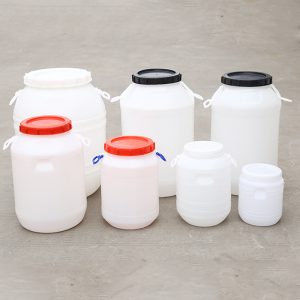Everyone knows that the paint bucket is difficult to clean after use, and the result is that it turns into rubbish. If it can be cleaned well, it can still be used. Let’s take a look at the cleaning method.
Paint buckets are generally made by molding methods, and different molding methods often have a greater impact on the performance and cost of the product. Paint buckets are often used in various paint containers. Some paint buckets can be cleaned manually, while others require more complicated methods, such as machine cleaning. The machine cleaning methods can be divided into intermittent cleaning methods and continuous cleaning methods. .
Intermittent cleaning: Put the paint bucket into the tank, use agitator such as sand, soil, etc. to remove the dirt on the paint bucket, and make it sink to the bottom of the tank. Some materials such as wood chips and paper are not easy to sink and need to be further purified. Others will stick together under special conditions, such as printing inks and labels. They can be picked out first, crushed, and then immersed in alkaline aqueous solution. In the cleaning process, after a certain period of time, it can be completed.
Continuous cleaning: the waste plastic is transported by the conveyor belt to the plastic grinder, where it is coarsely crushed, and then transported to a larger separation area, where the gravel is sunk into the bottom of the water and transported out regularly. Floating matter is transported by the conveyor roller to the wet mill configuration, and then enters the sedimentation tank. Anything heavier than water is separated, even very small particles, and it is clean.
The above is the related cleaning method of paint bucket, you can find out!

















